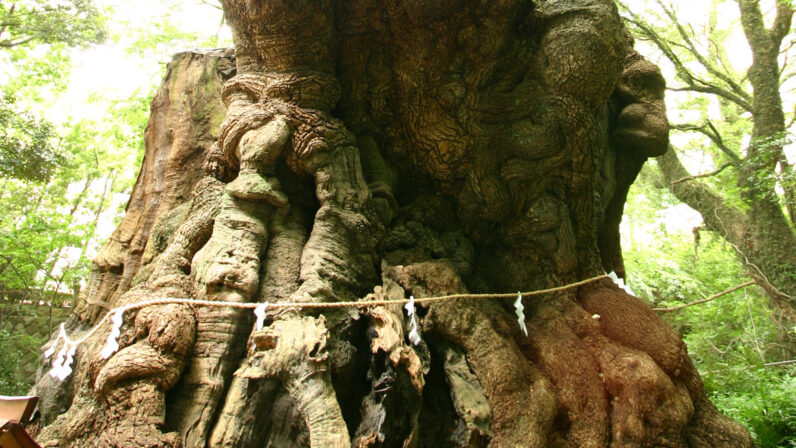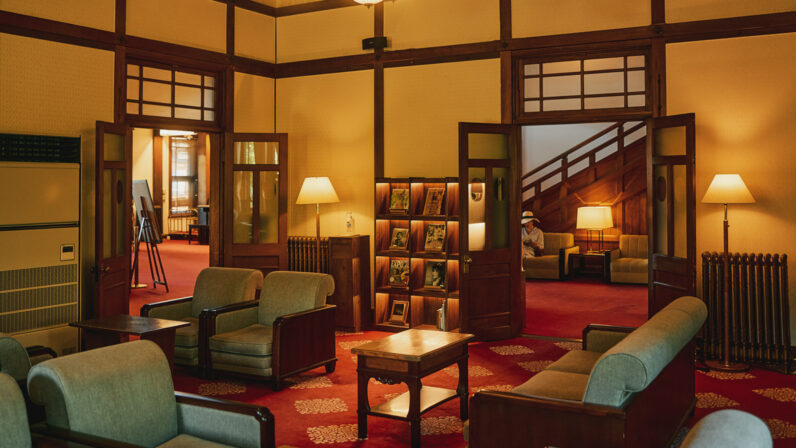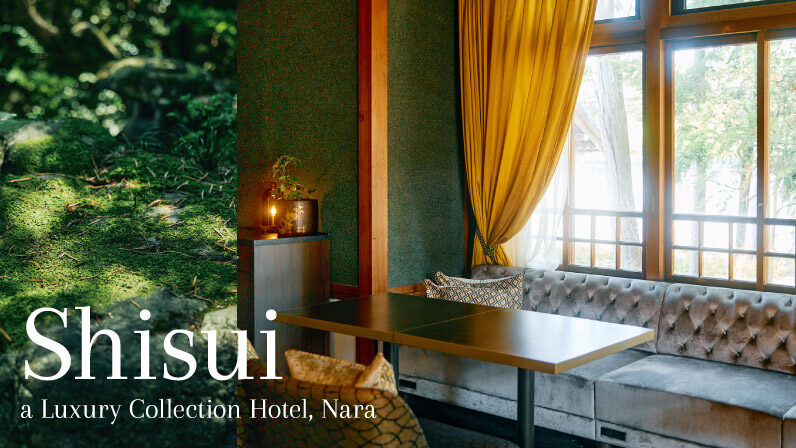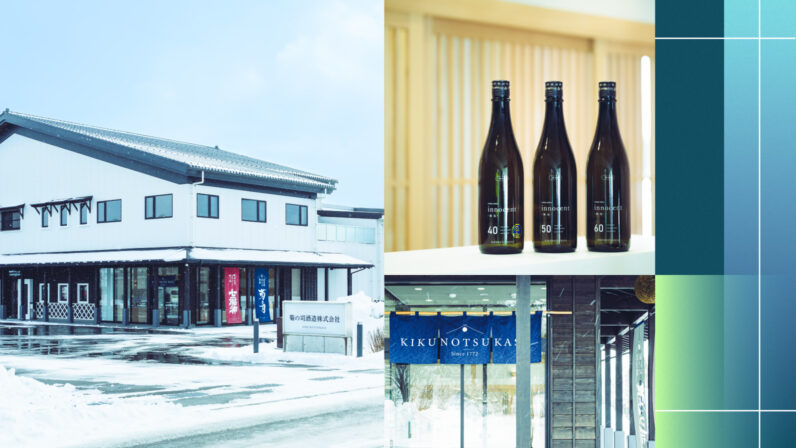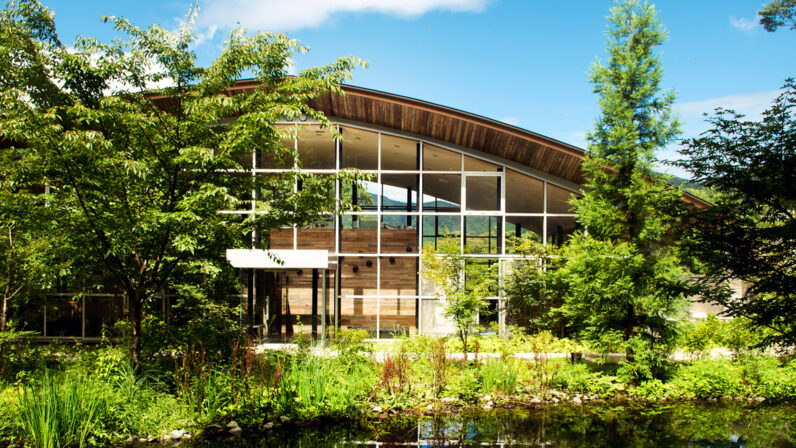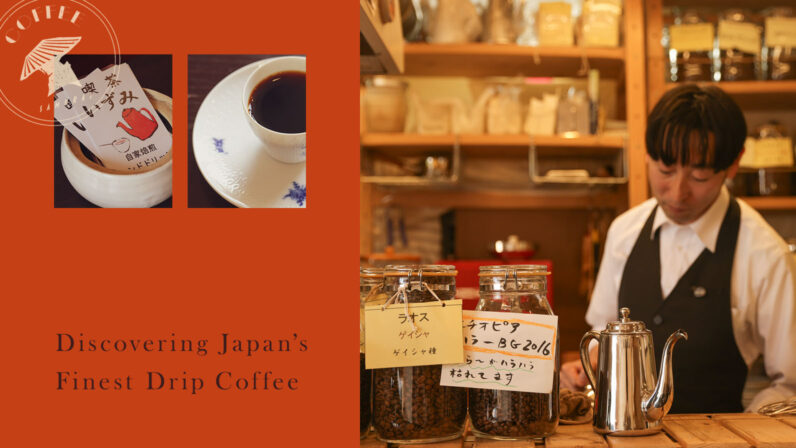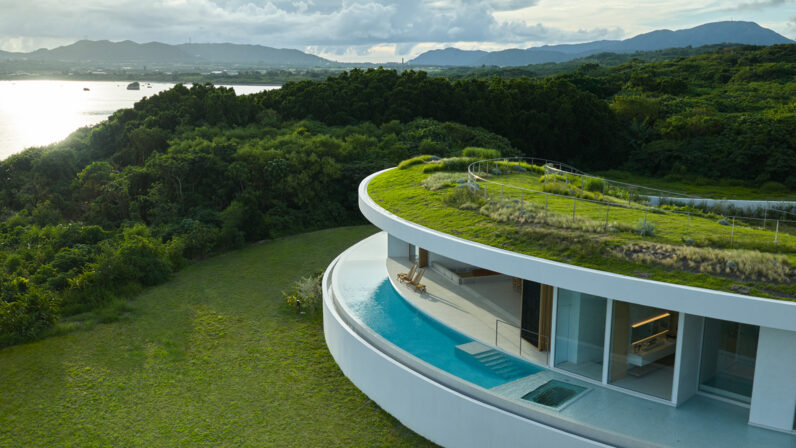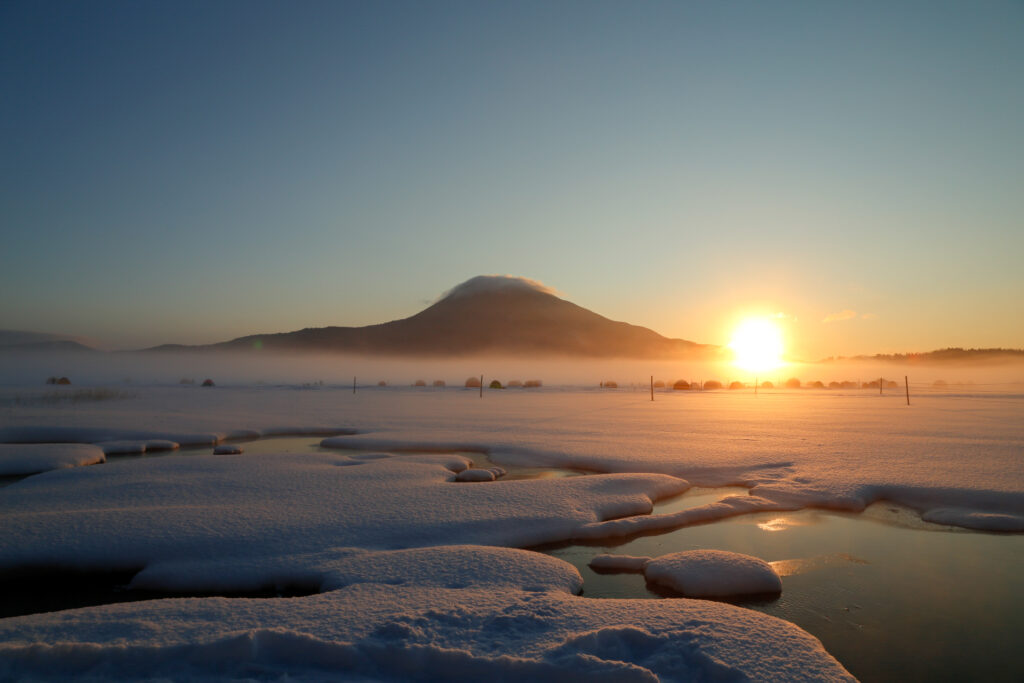
Lake Akan is a captivating destination known for its beautiful landscape crafted by the harmonious interplay of the lake, forest, and volcanoes. In addition, the area is blessed with therapeutic hot springs brought by the volcanoes. Despite being accessible by car from Kushiro Airport in about one hour, and just around an hour and a half from the northern Memanbetsu Airport, it is surrounded by vast natural habitats teeming with diverse wildlife. In addition to enjoying hot springs while taking in the breathtaking scenery, visitors can also enjoy fishing and kayaking on the lake, birdwatching, and hiking in the forest during the green season. Even in the winter season, visitors can hike through the forest and across frozen lakes wearing snowshoes or walking skis. With its ever-changing allure throughout the seasons, Lake Akan attracts a multitude of repeat visitors seeking to explore its wonders year-round.


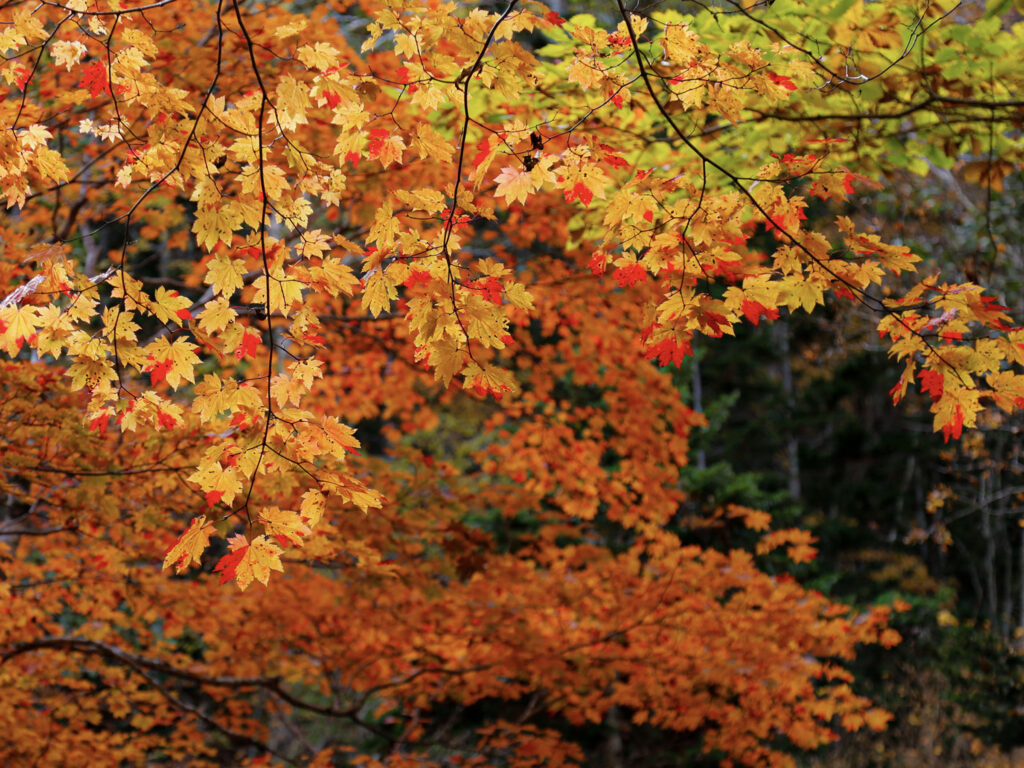
The best time to explore Lake Akan’s green season is from June onwards. Lake Akan’s forest remains untouched, known as a primeval forest and recognized as the kingdom of mushrooms. It’s home to the elusive Ito fish, Japan’s largest freshwater fish, which is coveted by anglers. Late September to early October is ideal for enjoying the autumn foliage, and by January, the lake freezes over entirely, offering a variety of new activities. Each season brings a wealth of ways to enjoy the area. (Photography by Shohei Matsuoka, SIRI)
The Maeda Ippoen Foundation owns around 3,800 hectares of forest, an area more than 10 times that of New York’s Central Park, surrounding Lake Akan. This marks my fourth visit to Lake Akan. The first time I came, I was mesmerized by the stunning scenery, and with each return, I uncover new charms, deepening my affection for the area. Behind its allure, it’s important to first acknowledge the tremendous efforts of one individual and the people who have inherited and preserved the spirit of Lake Akan.
The magnificent landscape surrounding Lake Akan is preserved by the determination of Masana Maeda
Born in 1850, towards the end of the Edo period, Masana Maeda hailed from Kagoshima Prefecture, where he apprenticed under a traditional Chinese medicine practitioner. At the age of 19, in 1869 (Meiji 2), he embarked on a journey to France for studies. Upon returning eight years later, he assumed key roles in ministries like Finance, Internal Affairs, and Agriculture, contributing significantly to national industrial development. Alongside his government duties, he ventured into personal farming and forestry endeavors. In 1906 (Meiji 39), he acquired national land near Lake Akan. Struck by the beauty of the lake’s surroundings, Maeda chose to alter his initial plan of logging the forests to establish ranches, opting instead for a complete shift in perspective. He decided to preserve the forests and promote eco-tourism, adopting the philosophy of “viewing the mountains rather than cutting down the mountains.” Japan, 117 years ago, was undergoing rapid industrialization to catch up with modern nations, gearing up for heavy industrialization in the lead-up to World War I.
Amidst the post-war surge in demand for timber, this strong determination was inherited by the second generation, Shoji Maeda, and later by Mitsuko Maeda, his wife, who became the third generation. Founded by Masana Maeda, Maeda Ippoen Garden transitioned into a foundation during Mitsuko Maeda’s tenure as the third-generation leader.
I was surprised to learn that amid the rapid modernization and militarization of that tumultuous era, there were individuals committed to preserving the rich natural heritage for future generations. They were essentially practicing the SDGs even 117 years ago.
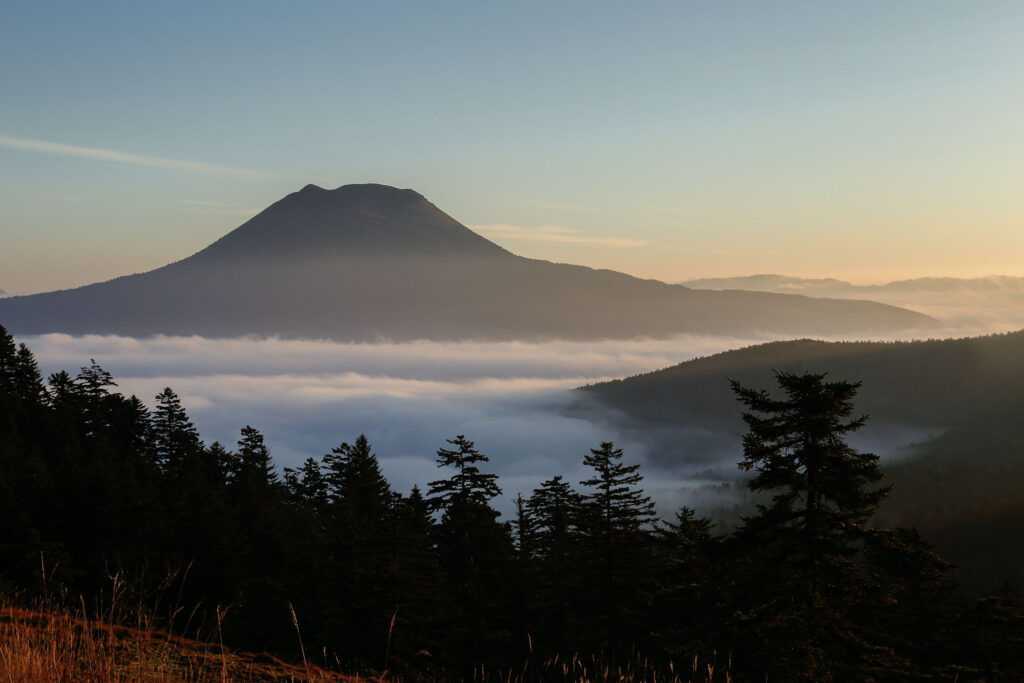
View of Mt. Oakan(Male Akan) from Mt. Meakan(Female Akan). In the early mornings of summer a sea of clouds surrounds the mountain. (Photography by Shohei Matsuoka, of SIRI)
The Ainu Philosophy of Harmonious Coexistence with Nature
The third-generation owner, Mitsuko, had a deep affection for the Ainu people and was committed to establishing the economic and social foundation for their livelihoods. To support this, she provided land free of charge for housing and shops, which contributed significantly to the development of Akanko Ainu Kotan, which is now known as one of Hokkaido’s largest Ainu kotan (settlements). At the time, the Ainu, who had lost their land to the Wajin (Japanese people who came from the mainland), relied on day labor and other work to make ends meet. Mitsuko, known for her support of Ainu self-reliance, was affectionately referred to as the ‘Hapo of Akan’ (meaning ‘kind mother’ in Ainu) by the Ainu community.
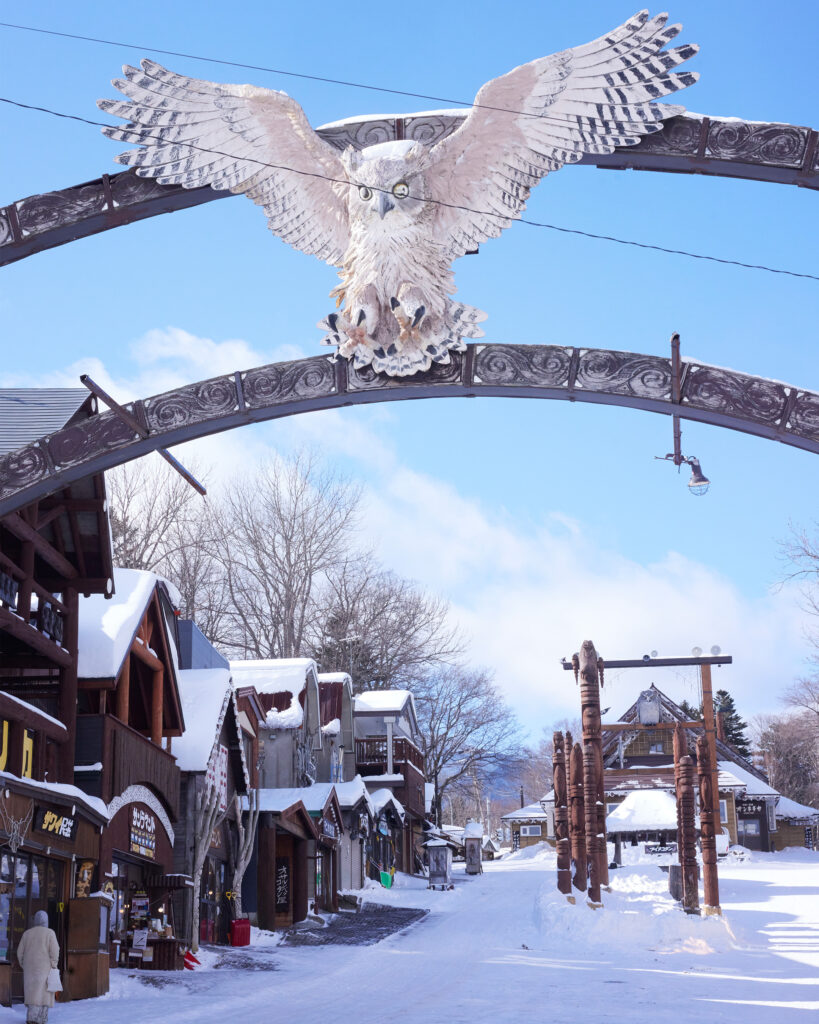
Entrance to the Ainu Kotan of Lake Akan. A large statue of an Ural owl greets visitors.
The Ainu are the indigenous people of the northern regions of the Japanese archipelago, especially Hokkaido. They possess a spiritual culture that believes all things in nature have souls, known as ‘Kamuy.’ It’s unacceptable for the Ainu people to exploit the surrounding flora and fauna solely for human convenience. Ainu biodiversity involves responsibly and rationally utilizing natural resources, listening to the needs of animals and plants, and coexisting with gratitude. Essentially, they believe that nothing is sent from the heavens without a purpose. In the popular manga ‘Golden Kamuy,’ Ainu spiritual culture and culinary traditions are intricately detailed, providing a fascinating read. Perhaps influenced by the popularity of Golden Kamuy, Ainu and matagi cuisine restaurants have been steadily gaining attention in Tokyo recently.
The land owned by the Maeda Ippoen Foundation is leased to chosen businesses, which conduct their operations there. Visiting this land and engaging in economic activities contributes to preserving the beautiful natural surroundings. This approach predates the buzz around terms like sustainable tourism—it’s about tourists actively safeguarding the environment. Reflecting on this, I felt that our behavior as visitors would also evolve.
Enjoying Lake Akan
Now, despite the lengthy introduction, understanding these backgrounds can significantly deepen and enhance the enjoyment of a trip to Lake Akan, perhaps many times over.
I’ve visited Lake Akan in both late summer and winter. For those seasons, I highly recommend taking a leisurely hike along the lakeside, which offers a delightful experience. You can start at the Lake Akan Lakeside Eco-Museum Center, situated where the Maeda Ippoen Foundation building (formerly Mitsuko Maeda’s residence) stands. Here, you can gather information about nearby trails and even rent snowshoes if needed. Begin your hike from the monument of Takeshiro Matsuura, known as the godfather of Hokkaido, and follow the lakeside promenade. As you proceed, the commercial structures fade from sight, immersing you in the serene tranquility of the forest, surrounded by the majestic view of the lake and towering trees. Keep an ear out for the various wild birds, squirrels, and deer that inhabit the forest as you stroll, pausing occasionally to gaze up at the trees. Once you’ve experienced this lakeside stroll, you’ll surely come to love Lake Akan.
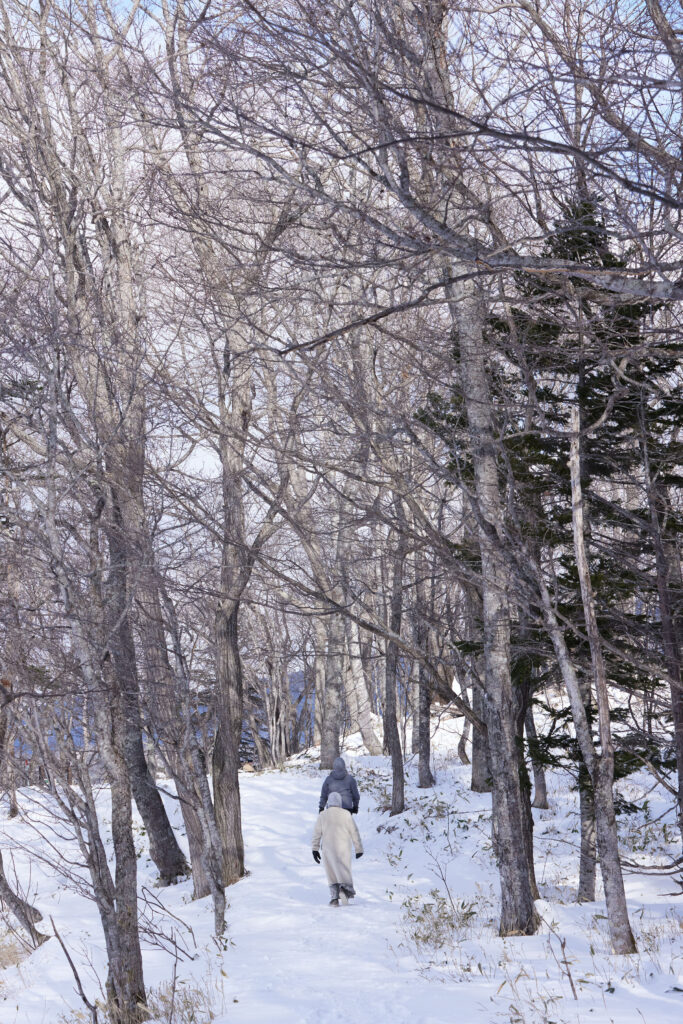
The forests designated as national parks are primarily composed of coniferous trees like Ezomatsu and Todomatsu, hosting a variety of wildlife including Ezo deer, Ezo squirrels, brown bears, Ezo flying squirrels, and nutcrackers.
As you approach the observation deck extending over the lake, you’ll notice the scent of sulfur emerging. This is caused by the bubbling mud volcanoes known as ‘Bokke.’ The term Bokke comes from the Ainu word ‘Pofuke,’ meaning ‘boiling place.’ Steam and volcanic gasses erupt from underground, accompanied by a bubbling sound. Due to the warmth around these Bokke, the surrounding snow melts, revealing patches of grass, which attract deer gathering for food.
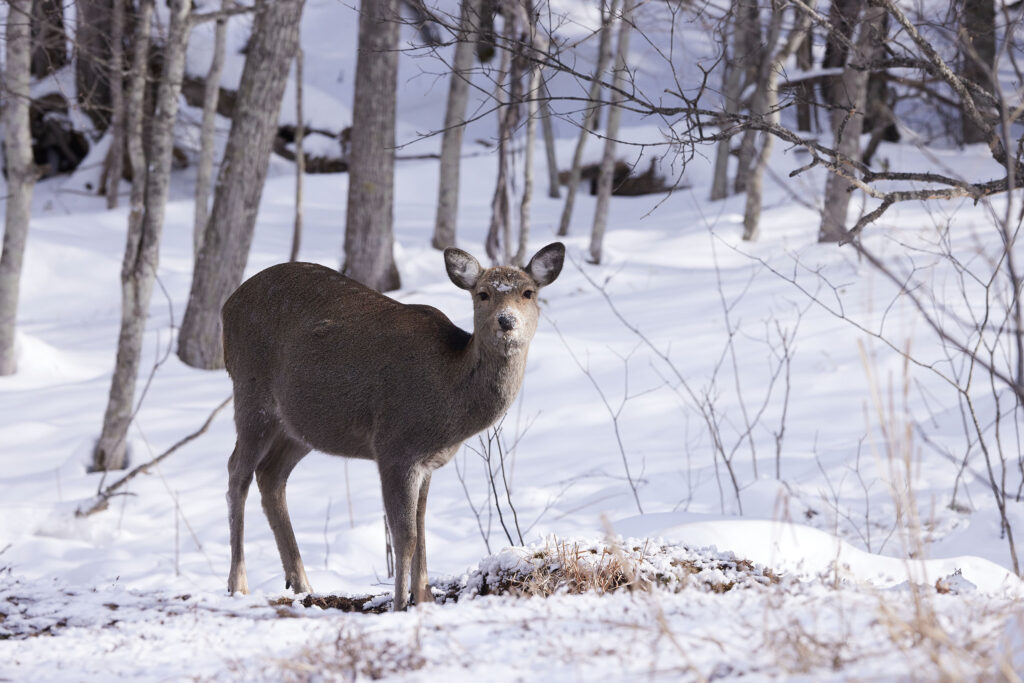
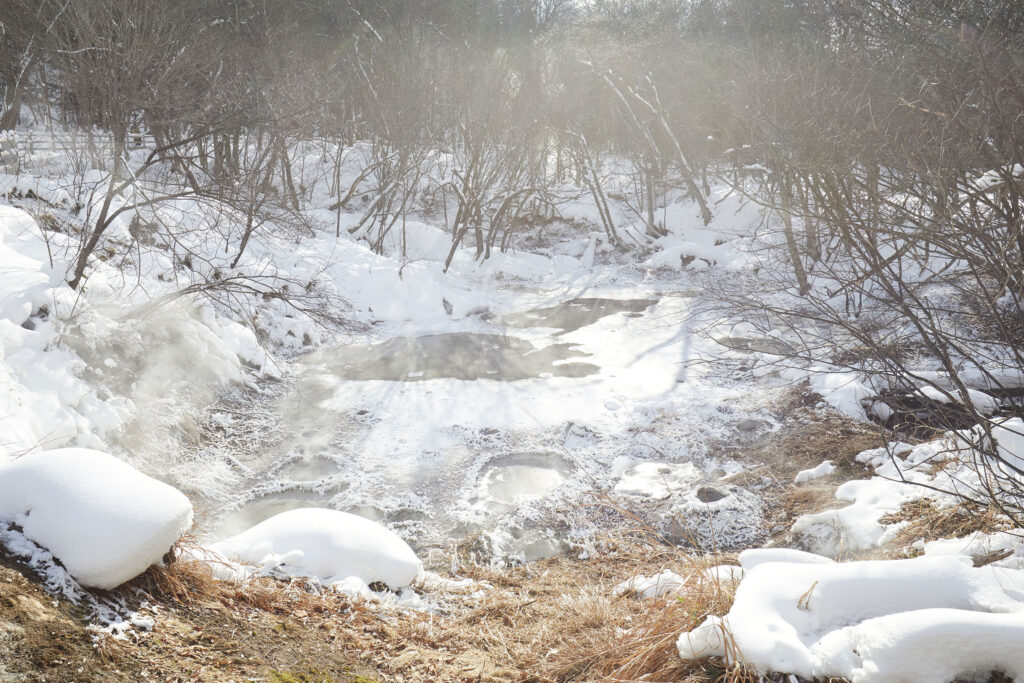
The trail leading from the Bokke into the heart of the forest and back to the Eco-Museum Center spans about 1.5 kilometers, offering a leisurely and light stroll. For those seeking to venture deeper into the woods, they can extend their hike along the Forest Path trail. Moreover, various trails, including routes to Mount Oakan, cater to different levels of hikers and those staying for an extended period. We highly recommend enlisting the help of a nature guide to tailor your travel itinerary and fully enjoy the splendor of nature according to your preferences.
For those seeking a more active adventure, I highly recommend joining a tour to explore the forest on the northern side of Lake Akan, where only ten visitors are allowed per day. Along the way, you might encounter herds of deer, and at various points along the lake’s northern shore, you can catch sight of natural wonders like Steller’s sea eagles, white-tailed eagles, and swans. In winter, popular activities include trekking across the frozen lake wearing walking skis or snowshoes to explore the forest.
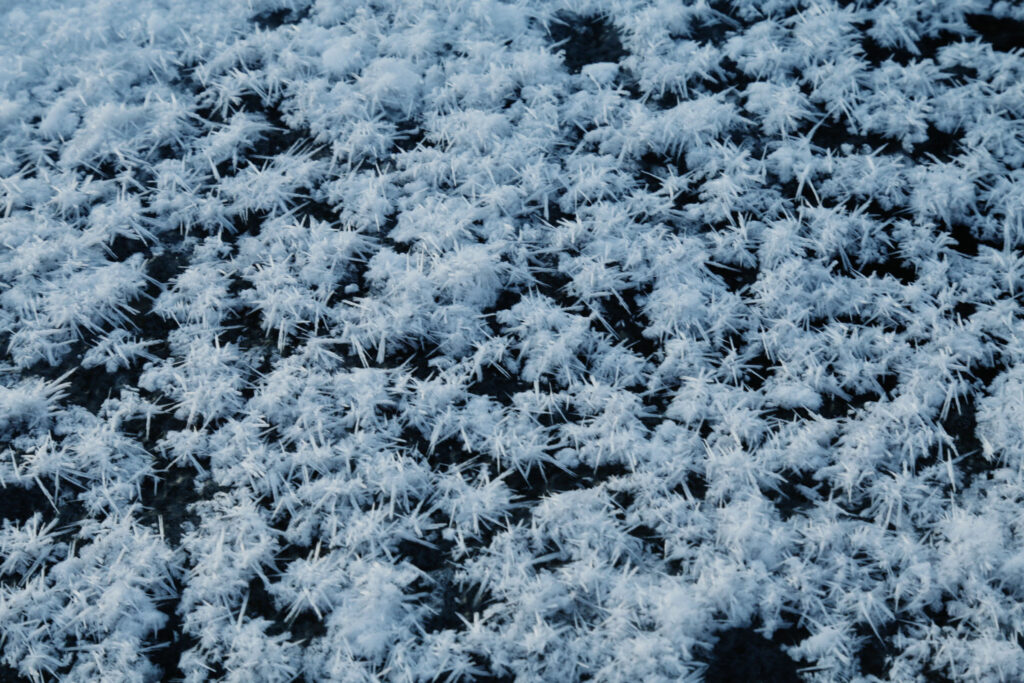
Frost flowers, resembling snowflakes with their layers of crystallized water vapor, create a winter flower garden visible only on mornings when specific conditions align. (Photographed by Shohei Matsuoka, of SIRI)
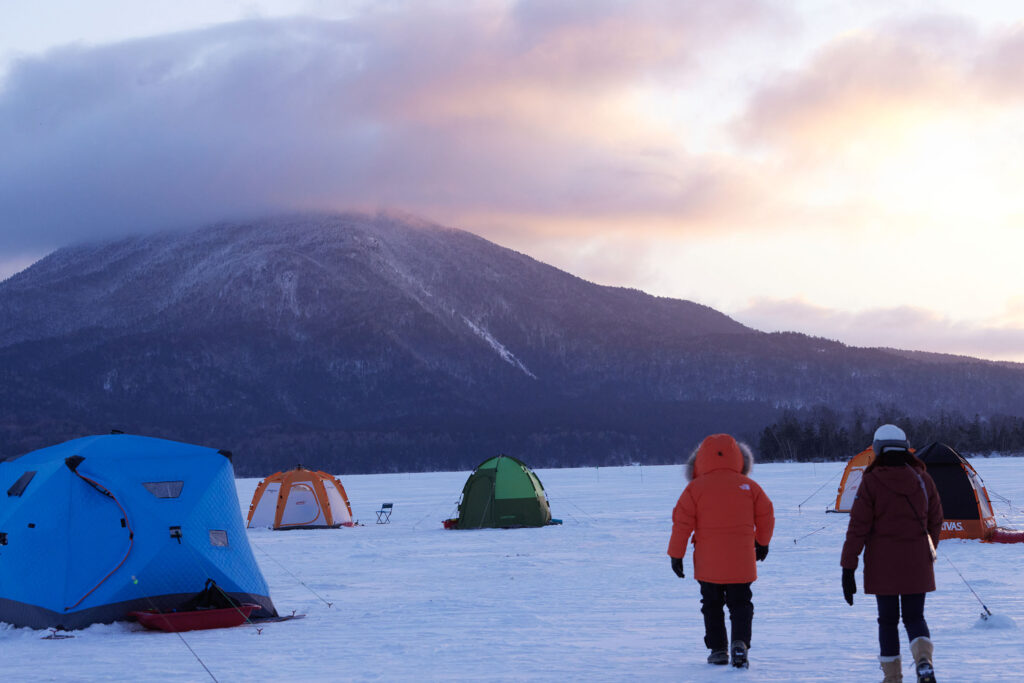
Clouds hover over the peak of Mt. Oakan, while numerous tents of ice-fishing anglers dot the surface of the lake.

Mr. Shigeru Takada of the Adventure Base SIRI on the 1st floor of Akan Lake Tsuruga Wings, holding frozen lake water in his hands. When it comes to activities on Lake Akan, he’s the go-to person.
Another option is the Light Forest Hiking tour, which requires a certified guide for access. This hiking route boasts fascinating attractions such as ancient Japanese Judas trees rumored to be 800 years old and Tezuka Marsh, where natural hot springs bubble up. With fewer visitors, you can relish peaceful moments amidst the serene forest. You can book tours at the Adventure Base ‘SIRI’ located on the first floor of the Lake Akan Tsuruga Wings hotel. SIRI has a team of diverse guides, so feel free to consult them before your Lake Akan visit to tailor your experience. Since tours might be canceled due to weather conditions, it’s advisable to secure accommodations for at least two nights. Plus, the ever-changing landscape, influenced by the weather, ensures that every visit offers a fresh perspective, keeping you captivated each time.
Lastly, I recommend visiting Akanko Ainu Kotan, which has become Japan’s largest Ainu Kotan thanks to the support of Ms. Mitsuko Maeda, the Hapo of Lake Akan. Here, you can admire the handmade wood carvings and embroidery by the Ainu people. Additionally, don’t miss the opportunity to see the impressive works on display at the accommodations of the Tsuruga Group, including life-size bear sculptures by renowned Ainu woodcarver Takeshi Fujito and pieces by Masamitsu Takiguchi.
The Nature Fostered by Eons Beyond Counting
Lake Akan originally formed as a vast caldera lake, sculpted by numerous volcanic eruptions that created a 1,370-meter-high mountain in its center. This mountain, now known as Mount Oakan, warmly welcomes numerous tourists. As Hokkaido’s fifth-largest freshwater lake, Lake Akan boasts a unique feature: the marimo, large spherical algae that can grow up to 30 cm in diameter and are found in only two places worldwide. These marimo serve as a symbol of the rich natural environment surrounding Lake Akan. The abundant nature within the large caldera, formed by volcanic eruptions about 1.7 million years ago, is exclusive to Akan. It’s a cherished location, offering a glimpse into the Earth’s processes over time and reminding us of the blessings bestowed upon us, a treasure we wish to preserve for future generations.
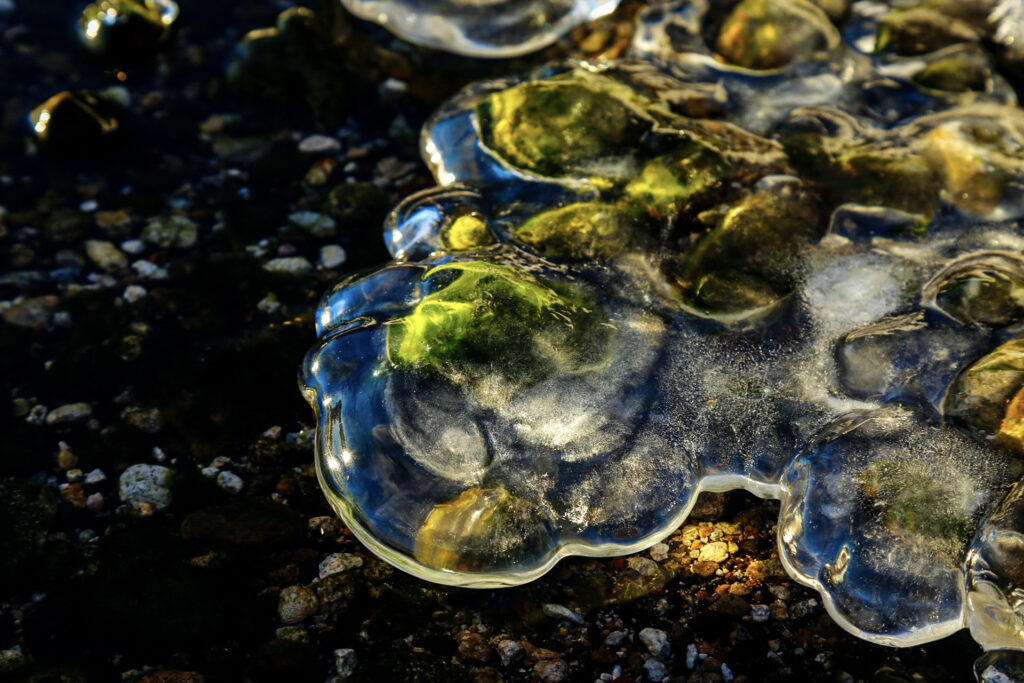

First image: Small marimo are trapped within the forming ice of the lake.
Second image: Natural artwork crafted by nature. Frost flowers bloom on the ice, displaying an array of colors due to oil or other substances. (Photography by Shohei Matsuoka, of SIRI)
Lake Akan is a stunning place to revisit time and time again.
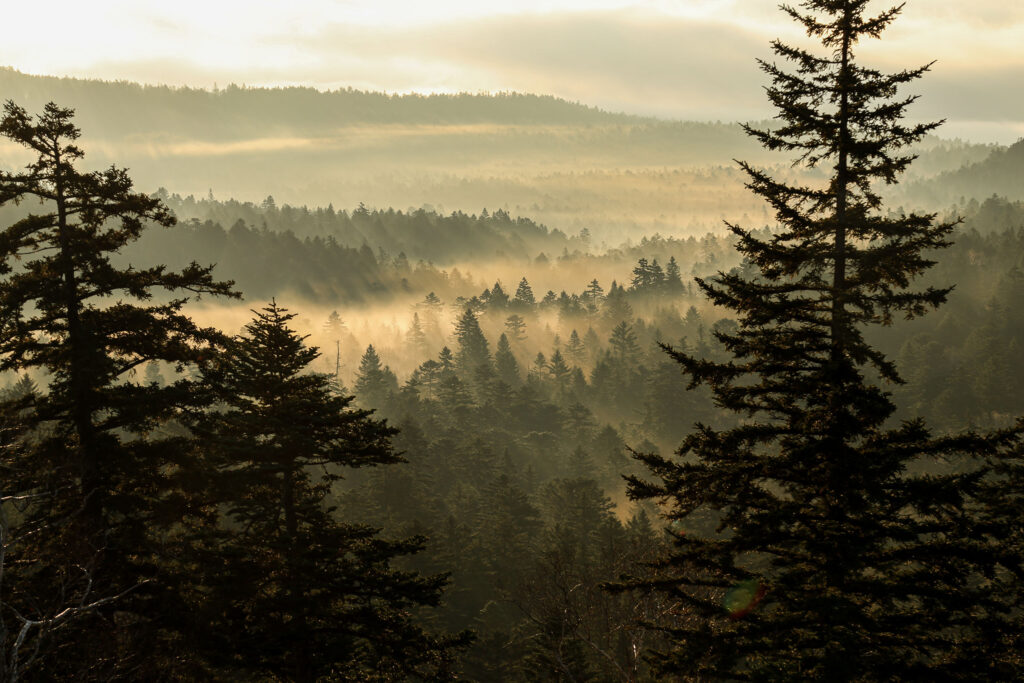
(Photographed by Shohei Matsuoka, of SIRI)
Tsuruga Adventure Base SIRI https://tsuruga-adventure.com/en/

